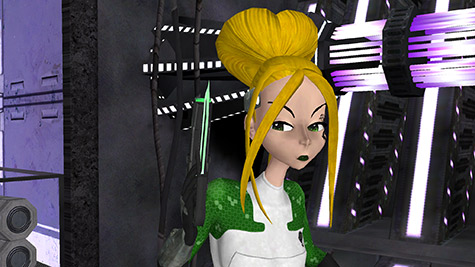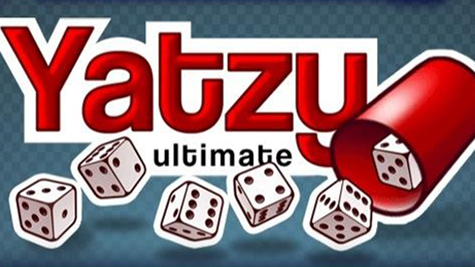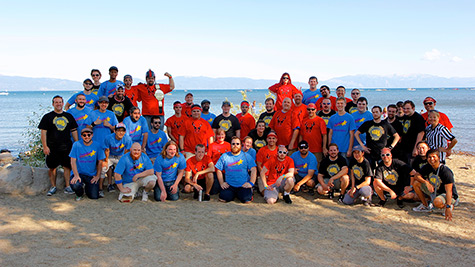bytecombo is a two-person indie game studio based in Berlin, Germany founded in 2013 by Katja Krone and Lars Quentmeier. It was formed in order to produce small, cross-platform mobile games. Their first game Bronko Blue, the kitten copter just hit the stores on July 2014. Lars looks at the journey of the game, the importance of feedback, and what they learned from it all.
Before we founded bytecombo, we were both working as full-time software developers (mostly web projects) in Berlin. This is where we got to know each other. Both of us were interested in developing casual games and came up with thousands of ideas just talking about it, so we decided to simply go for it and try our luck in developing mobile games. To do so, we both reduced our day jobs to part-time jobs and started working.
Too Many Concepts
Bronko Blue, the kitten copter is bytecombo’s second project, but our first real game. We started working on it in May 2013. Our very first idea was to create a really simple copter clone with some nice toony graphics and release it as soon as possible. But we felt that such a game would be too boring and small to earn any money, so we extended the concept with physics, interactive elements, enemies, and a small storyline. Actually, this was so much fun that it was hard to stop. It is just too tempting to include another cool feature into the concept!

We released a first prototype to our friends in June 2013, asking for feedback and their thoughts on our game. It was at this point that we realized most people didn’t get all aspects of our concept, so we had to reduce the functionality. Back then, we had one extra button to control the player. The basic idea was that, once in a while, lightning would strike, and the user had to press this button in order to protect themselves from the lightning while simultaneously collecting the energy to use some of the other functions (shoot energy balls and use the torch). Unfortunately (while I still like the idea), this proved to be much too complicated. So the idea of collecting energy was completely removed from the game so that the player could concentrate on flying and avoiding obstacles.
Work, Work, Work
We definitely underestimated the time necessary for us to produce Bronko Blue, the kitten copter, and so we had to learn to keep calm and continue working. At the end, we worked for more then one year, spending two days a week on it in order to finish and publish the game on iTunes, Google Play, Amazon, and Blackberry World. But sometimes, keeping calm and pushing forward proved to be very hard.

Especially annoying was the fact that the actual development of the game was done within three to four months, but fixing cross-platform issues, fine-tuning, testing, and optimizing the concept took a lot more time and energy than expected. It often felt as if for every fixed problem on one platform, a new problem on another platform occurred. But nevertheless, development with the feature-rich programming language HAXE and the frameworks OpenFL and HaxeFlixel at the end worked out for us, as we were able to target several platforms including iOS, Android, Blackberry, and Flash with one code base. However, it proved to be more difficult to get the game running stable on each platform than expected.
Listen to Feedback

Another difficulty was getting proper feedback. It was a lot more difficult to get feedback while developing than expected, especially from friends and family. They are very nice about things, and criticism isn’t always very specific. It’s hard or even impossible to match the taste and level of difficulty for everyone as their gaming habits are so different. Of course, you can get useful feedback from other gamers and developers like bug reports, but more often, it’s only a negative or positive rating, which doesn’t help a lot.
In order to get some more opinions, we first published the game as a free flash game on Kongregate. We received some useful feedback that we used for fine-tuning our app before we released the game to the mobile app stores. Actually, we should have listened more carefully to all of the voices on Kongregate, as we unfortunately missed fixing one very crucial bug before releasing to iTunes and Google Play.

I had implemented a small system to localize our game to different languages. But unfortunately, we never really tried to set the system language of our devices to any other language than German or English. So the game simply crashed on application launch for every person who did not have an English or German language set on their device. Of course, this is a really nasty and unnecessary bug. Especially because it takes a lot of days to be able to publish a bugfix release in some of the appstores. The same error actually occurred and was reported in the flash version, but we simply could not find the reason why some people seemed to have problems running our game. We thought it must be some problem with the flash player and definitely not our stupidity 😉
A Learning Process
Yet our biggest challenge was and still is marketing. It proves difficult to get some visibility in the appstores with so many awesome contenders, especially with a small budget. Although we received some very encouraging reviews from the press at launch, we haven’t been able to reach any noteworthy visibility in the stores so far. But we still have some ideas to promote Bronko Blue, and will be implementing these ideas soon.

We have worked in the software industry for some years, with a number of projects under our belt. But in all of these projects, we were only programmers. Game development doesn’t only consist of programming, but of an awful lot of tasks that you will have to do on your own if you are an indie developer with no money to pay anyone else to do it. For us, it was a very long way from the initial idea to the published product, involving a lot of different tasks that we knew next to nothing about (and sometimes still don’t) when we founded bytecombo. Luckily, Katja is able to produce some lovely graphics besides solving complex logical problems. But our marketing skills still suck!
Love What You Do
Since game development (or any software development at all) usually takes a lot of time (and you can’t be sure if you will finally succeed financially), you should love what you are doing and be aware of the risk that you are taking as an indie developer. You should love playing games, love being creative, love implementing, and even love promoting it. What you need is patience and some solid funding. Working part time in our own company and the other half of the week for other companies proved to be rather productive for us. Sometimes a break and change of focus is very useful, and of course, it is a really good feeling to be sure that you will always have enough money at the end of the month, even if your current game might fail commercially.

It has now been two months since Bronko Blue, the kitten copter has been released to the mobile appstores. Reading the first customer and press reviews was an exciting feeling. So far, the desired success is not reality, and the sales are still low. But nevertheless, we are awfully proud of our game, as we do think that it is a good and fun game and a nice start for bytecombo into the interesting and challenging world of game development. We are currently brainstorming and will soon start working on a few game prototypes to decide what will be our next project. I’m so looking forward to coding and being creative again 😉
Find out what comes from bytecombo’s brainstorming by following them on Facebook and Twitter.

















